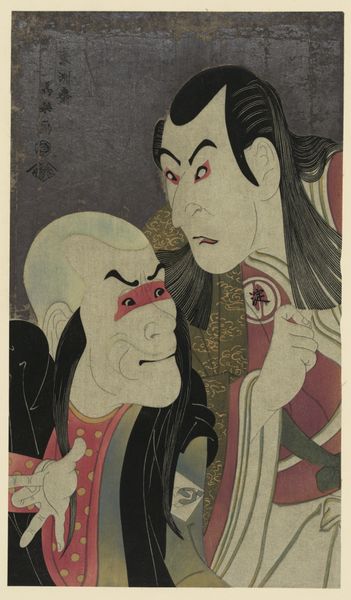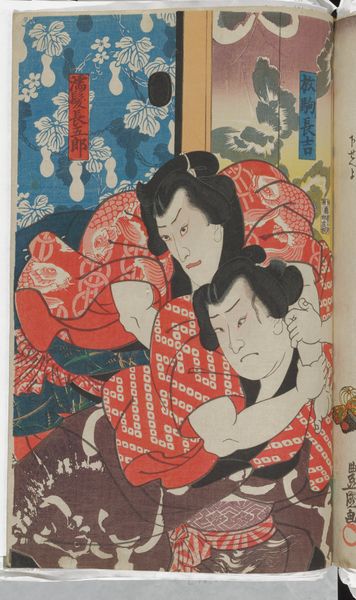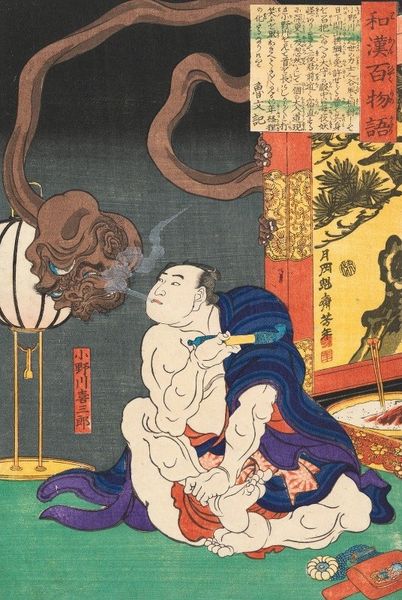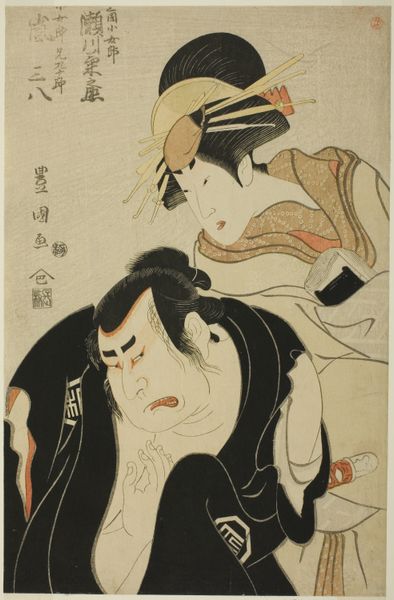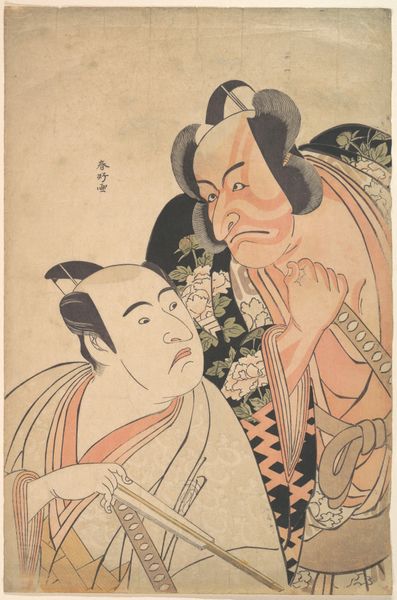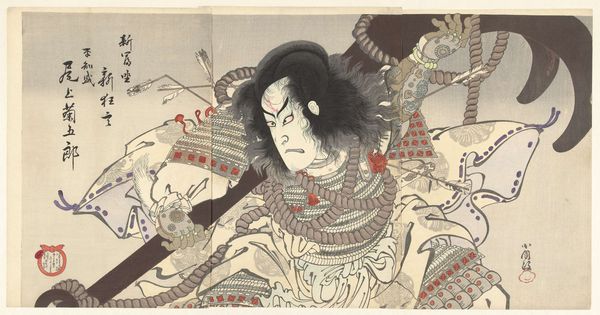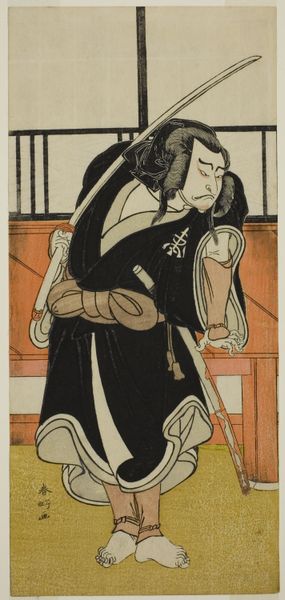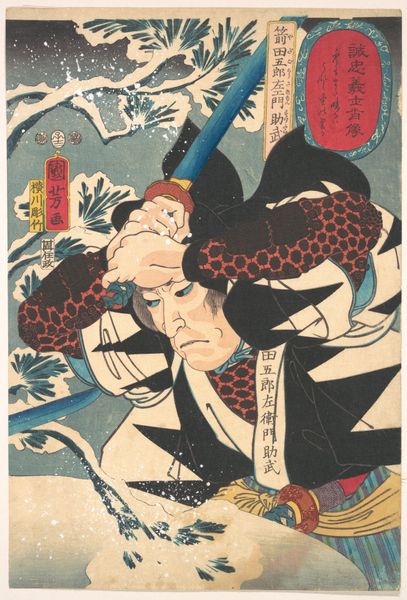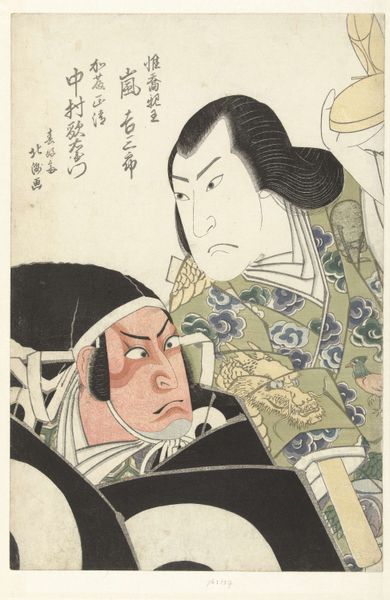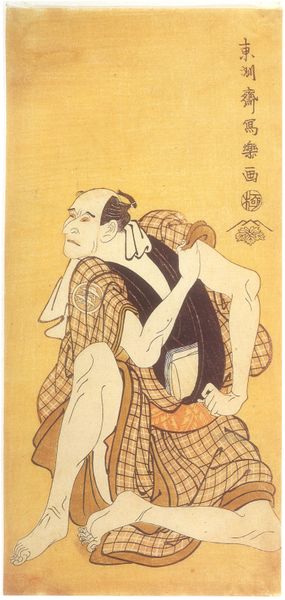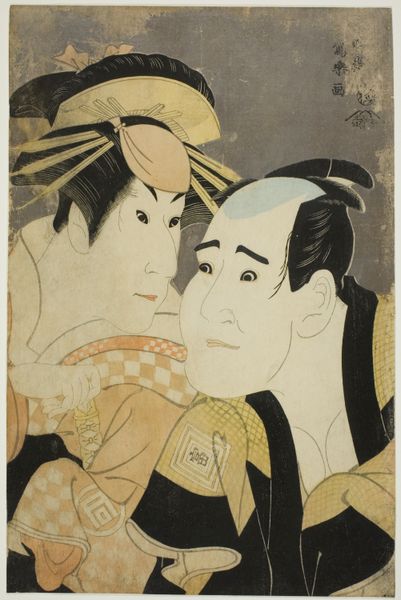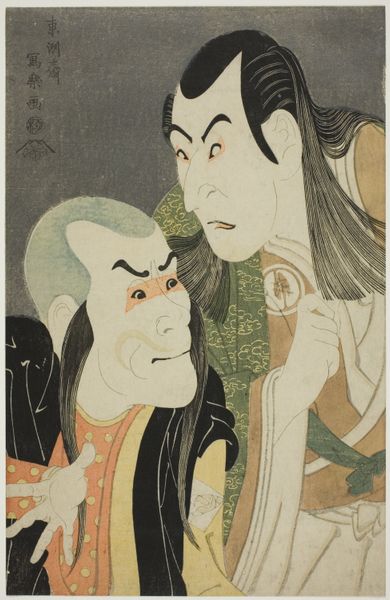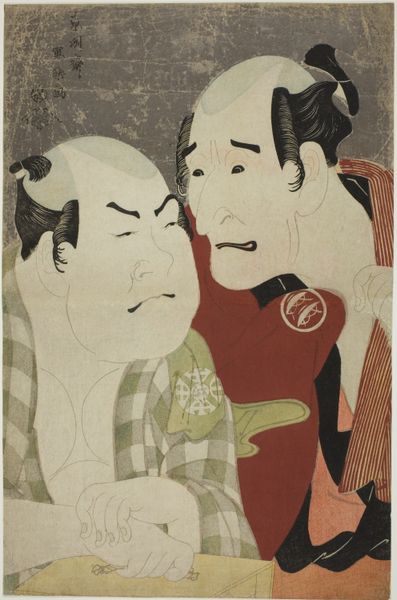
Ichikawa Danjūrō IX in the Role of the Monk Mongaku from the Play "Mongaku Kanjincho" 1896
0:00
0:00
Dimensions: Vertical ōban; Image (each): 14 1/4 × 9 3/4 in. (36.2 × 24.8 cm)
Copyright: Public Domain
Editor: This woodblock print by Toyohara Kunichika, made in 1896, is titled "Ichikawa Danjūrō IX in the Role of the Monk Mongaku from the Play 'Mongaku Kanjincho'." I find the main figure's exaggerated expression and the dynamism of his pose quite striking. What socio-political elements were at play at the time which influenced this type of dramatic, larger than life rendering? Curator: Well, let's unpack this image by looking at the convergence of several histories. Firstly, we need to consider the Meiji period itself and Japan's rapid modernization. This print comes from a time of huge social upheaval. What tensions do you think this modernization might create and how might Kabuki theatre, and by extension, this print, address those? Editor: Perhaps the theatre and art served as a kind of anchor, reminding people of their cultural heritage amid so much change, or as a venue for processing anxieties caused by shifting social norms? Curator: Exactly! Kabuki often negotiated these anxieties. Prints like this one functioned as publicity for specific plays and celebrated particular actors like Ichikawa Danjūrō IX, who, beyond his celebrity, was instrumental in fighting for the preservation of Kabuki traditions within an increasingly westernized society. How might Kunichika’s artistic choices – the intense expression, the dynamic line work – reinforce this sense of cultural preservation or even resistance? Editor: It's as if he's capturing not just a performance, but the spirit of resistance and tradition the actor embodies. I now recognize the subject portrayed and appreciate Kunichika's composition and historical rendering of theatre as a vessel that carries these broader sentiments. Curator: Precisely! It’s in these layers of performance, preservation, and politics that we can truly understand the work's significance.
Comments
No comments
Be the first to comment and join the conversation on the ultimate creative platform.
